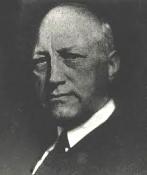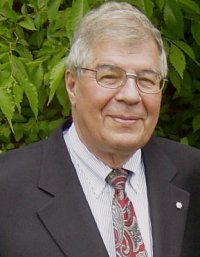Related Research Articles

Vale Canada Limited is a wholly owned subsidiary of the Brazilian mining company Vale. Vale's nickel mining and metals division is headquartered in Toronto, Ontario, Canada. It produces nickel, copper, cobalt, platinum, rhodium, ruthenium, iridium, gold, and silver. Prior to being purchased by CVRD in 2006, Inco was the world's second largest producer of nickel, and the third largest mining company outside South Africa and Russia of platinum group metals. It was also a charter member of the 30-stock Dow Jones Industrial Average formed on October 1, 1928.

Monel is a group of alloys of nickel and copper, with small amounts of iron, manganese, carbon, and silicon. Monel is not a cupronickel alloy because it has less than 60% copper.

Thompson is a city in north-central Manitoba, Canada, the largest city and most populated municipality in Northern Manitoba.
The American Institute of Mining, Metallurgical, and Petroleum Engineers (AIME) is a professional association for mining and metallurgy, with over 145,000 members. The association was founded in 1871 by 22 mining engineers in Wilkes-Barre, Pennsylvania, and was one of the first national engineering societies in the country.

Henry Krumb was an American mining engineer. As a Guggenheim engineer, he was the first to apply scientific methods to sampling bulk-tonnage orebodies at the enormous porphyry copper deposit at Bingham Canyon, Utah.

Sir Alan Howard Cottrell, FRS was an English metallurgist and physicist. He was also former Chief Scientific Advisor to the UK Government and vice-chancellor of Cambridge University 1977–1979.

Raymond Alexander Price, was a Canadian geologist. He has used his research on the structure and tectonics of North America’s lithosphere to produce extensive geological maps. He has also provided guidance for nuclear fuel waste disposal and reports on the human contribution to Global warming.
Anthony James "Tony" Naldrett, FRSC was an English and Canadian geologist. He was an authority on the geology and origin of nickel-copper-platinum group element deposits, the tectonic setting in which they occur, the petrology of associated rocks, and controls on their composition. He was an expert on the reaction between sulfide and silicate melts, fractional crystallization of sulfide melts, and the role of hydrothermal fluids.

The Mond Nickel Company Limited was a United Kingdom-based mining company, formed on September 20, 1900, licensed in Canada to carry on business in the province of Ontario, from October 16, 1900. The firm was founded by Ludwig Mond (1839–1909) to process Canadian ore from mines near Sudbury, which were then shipped to Mond's works in Britain for final purification via his patented carbonyl process.

Selwyn Gwillym Blaylock was a part of starting the mining industry in western Canada. He was president of the Consolidated Mining & Smelting Co., a forebearer to Cominco and Teck Resources, recipient of several international awards for his work in metallurgy, and was the President of the Canadian Institute of Mining, Metallurgy and Petroleum in 1934–35. For his work he was inducted into the Canadian Mining Hall of Fame.

William Embry Wrather was an American petroleum and economic geologist who served in various administrative roles including as director of the U.S. Geological Survey (USGS). He was awarded the John Fritz Medal in 1954.
Walter R. Hibbard Jr was an American metallurgist, a distinguished professor at Virginia Polytechnic Institute and State University and the 11th director of the U.S. Bureau of Mines in President Johnson's administration.

Paul Dyer Merica was an American metallurgist, president of the International Nickel Company of Canada Ltd., inventor, and recipient of the 1938 John Fritz Medal.

James Gayley was an American chemist and steel metallurgist who served as managing director of the Carnegie Steel Company, and as the first vice president of U.S. Steel from 1901 to 1908. He is credited with many inventions which greatly improved the fields of steel and iron making. For his contributions in the field of metallurgy, he was awarded the Elliott Cresson Medal in 1909, and the Perkin Medal in 1913.
Dan J. Thoma is an American metallurgist who is a Professor in the Department of Materials Science and Engineering at the University of Wisconsin–Madison. He is the director of the Grainger Institute for Engineering at the University of Wisconsin–Madison. Thoma is also a past President of the American Institute of Mining, Metallurgical, and Petroleum Engineers (AIME). Thoma is well-known for his research on 3D printing technology, which he has carried out for over two decades.
John Robert Suman was a geologist, petroleum engineer, and business executive.
Robert Crooks Stanley was an American industrialist and mining engineer. He was chairman and president of International Nickel Company and discovered the alloy Monel.
Samuel J. Ritchie, an American millionaire from Ohio, founded the Canadian Copper Company (CCC) in 1886 to exploit the minerals near what was to become known after 1902 as Copper Cliff. He was also president of the Central Ontario Railroad (COR).
Roy Gordon was a chemist and a research metallurgist who rose to become President of Inco Limited.
Albert Paul Gagnebin (1909-1999) was an American metallurgist who became president then Chairman of Inco Limited. He co-discovered ductile cast iron.
References
- 1 2 3 4 5 6 "John Fairfield Thompson | the American Institute of Mining, Metallurgical, and Petroleum Engineers".
- 1 2 https://bac-lac.on.worldcat.org/oclc/490329.
{{cite news}}: Missing or empty|title=(help) - ↑ Thompson, John F.; Miller, Edmund H. (1906). "Platinum Silver Alloys". Journal of the American Chemical Society. 28 (9): 1115–1132. Bibcode:1906JAChS..28.1115T. doi:10.1021/ja01975a002.
- ↑ https://library.bowdoin.edu/arch/college-history-and-archives/honors/Thompson59.pdf.
{{cite news}}: Missing or empty|title=(help) - 1 2 3 4 "Manitoba's Legends of Rock: John F. Thompson | Teens Rock! | Manitoba Rocks! | Manitoba Economic Development, Investment and Trade | Province of Manitoba".
- 1 2 "John Fairfield Thompson (1891 - 1968) - Canadian Mining Hall of Fame". 17 August 2001.
- 1 2 "John Fairfield Thompson | the American Institute of Mining, Metallurgical, and Petroleum Engineers".
- ↑ "John Thompson Jr., A.s.p.c.a. President". The New York Times. 4 January 1971.
- ↑ "Thompson, John Fairfield art work / (Photographed by Peter A. Juley & Son) | Smithsonian Institution".
- ↑ "Dr. J.F. Thompson Community Clock". 20 May 2011.